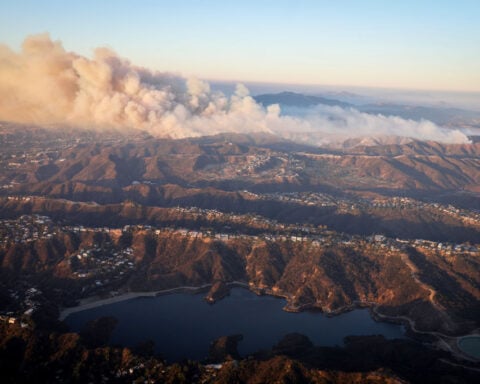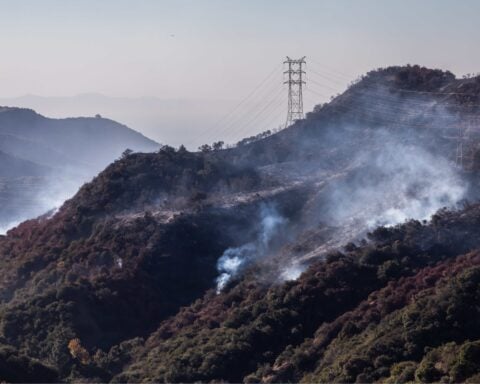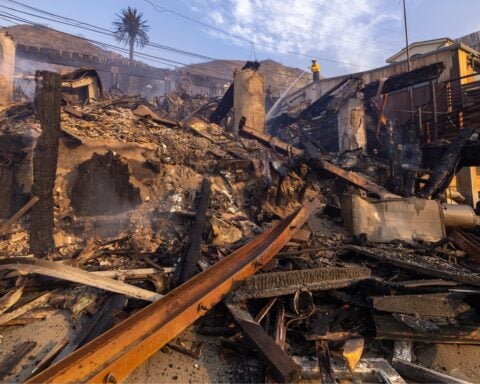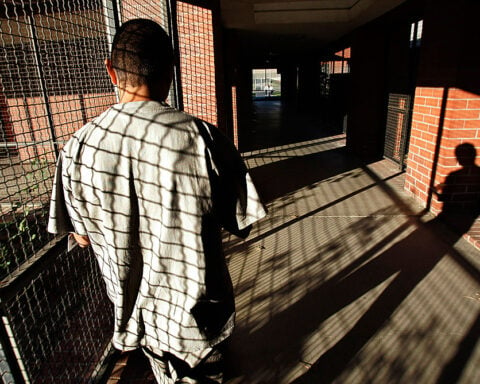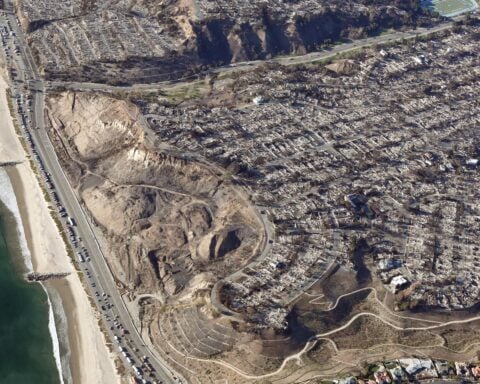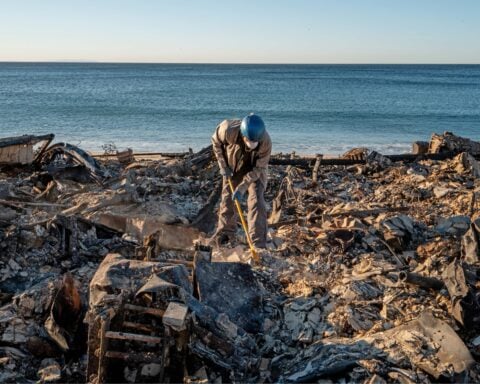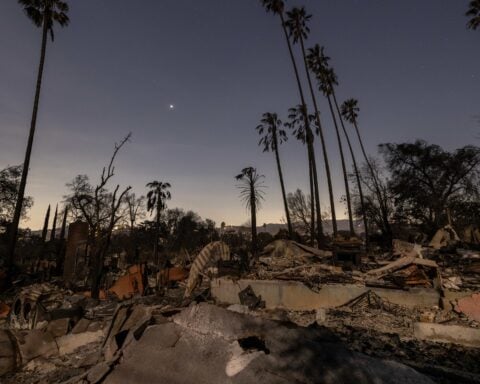By Ned Randolph
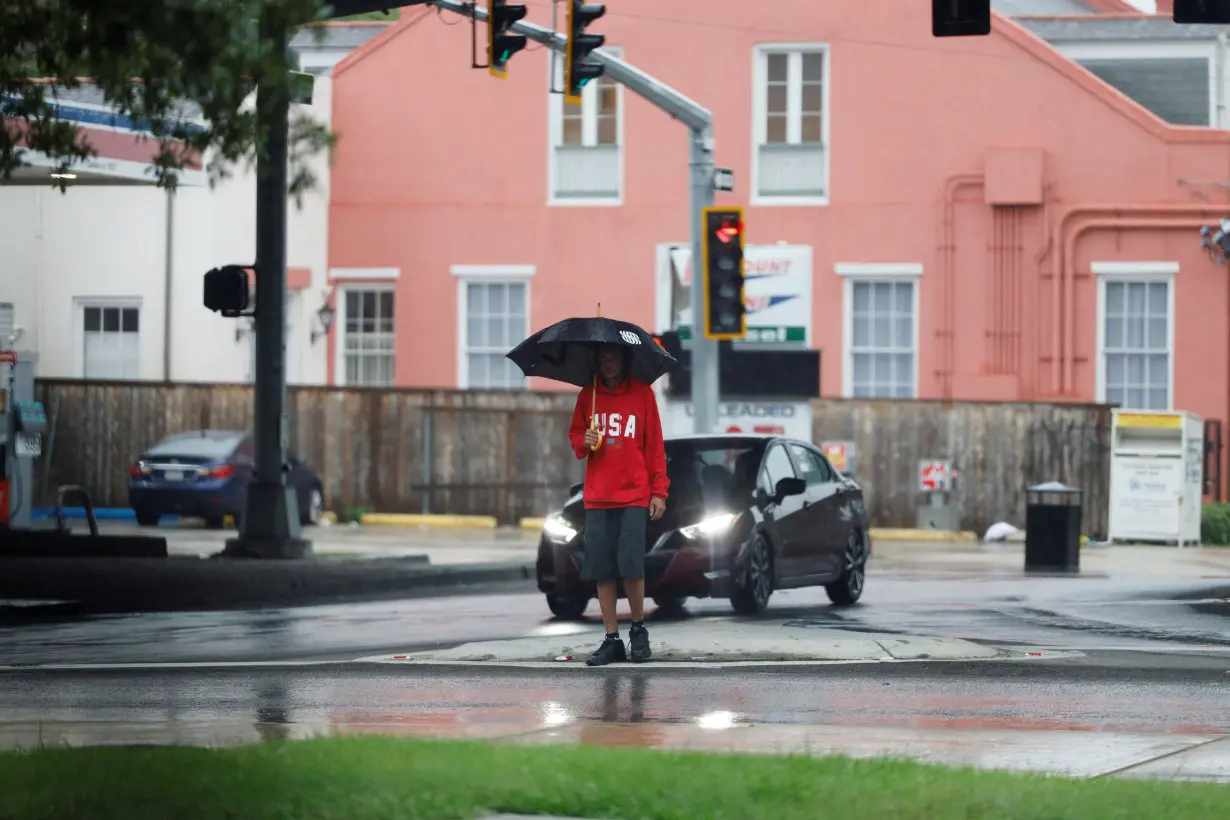
NEW ORLEANS (Reuters) -Hurricane Francine came ashore in southern Louisiana on Wednesday, pounding New Orleans with heavy rains and gusty winds while threatening the wider Gulf Coast with a potentially deadly storm surge that led to evacuation orders for thousands of people.
Francine packed maximum sustained winds of 75 mph (120 kph) after the eye of the storm traveled inland over southern Louisiana and was about 50 miles (80 km) west-southwest of New Orleans, the U.S. National Hurricane Center said.
The hurricane center briefly upgraded the storm from Category 1 to Category 2 on the five-step Saffir-Simpson scale just before it made landfall. Even as a Category 1 storm, its very dangerous winds are capable of producing damage, and the whole of the Gulf Coast in Louisiana and Mississippi was under a warning for storm surge that the hurricane center called life-threatening.
More than 200,000 homes and businesses throughout Louisiana had lost electricity, according to PowerOutage.us.
The iconic French Quarter neighborhood of New Orleans known for its tourist bars and restaurants was locked down with a noticeable police presence and very few pedestrians.
On Bourbon Street, Gina Kralek said she was working at the Clover Grill covering for a pair of co-workers who had evacuated before the storm.
"Normally I evacuate but I've got my three dogs," Kralek said. "Not everyone wants to take me with the dogs."
Louisiana Governor Jeff Landry and U.S. President Joe Biden each declared a state of emergency in anticipation of the storm, freeing up emergency management resources and potential financial aid in the event of serious damage.
More than 78,000 commercial real estate properties worth some $143 billion were in the direct path of the storm, financial researcher Moody's Ratings said. Those buildings have a greater than 50% chance of getting hit by winds of at least 50 mph (80 kph), the wind speed at which some damage is likely, Moody's said.
Several parishes, or counties, on or near the Louisiana Gulf Coast earlier issued mandatory evacuation orders, and the state transportation department issued evacuation maps. The city of New Orleans distributed sandbags at five sites.
Any major storm near Louisiana evokes memories of Hurricane Katrina, the 2005 storm that devastated New Orleans and surrounding areas, killing nearly 1,400 people and causing $125 billion in damage, according to a 2023 hurricane center report.
Water from Lake Pontchartrain, which borders the city to the north, was starting to churn over its seawall. However since Katrina, the federal government built a $14.5 billion levee protection system, which includes storm water gates that can prevent storm surge into the city's interior drainage canals, which experienced catastrophic failure during Hurricane Katrina.
Grocery stores were boarded up by late afternoon but not before veterans of previous storms loaded up on provisions.
"We're all set. We have our canned goods. Have our supplies," said Steve Rodriguez, who has lived in New Orleans since 1983 and was attempting some additional last-minute shopping.
The storm already had the effect of disrupting energy production and agricultural exports out of the U.S. Gulf of Mexico.
Nearly 39% of oil and almost half of natural gas production in the U.S. Gulf of Mexico was offline on Wednesday, according to the offshore regulator. A total of 171 production platforms and three rigs had been evacuated.
(Reporting by Ned Randolph in New Orleans; additional reporting by Rich McKay in Atlanta and Brendan O'Brien in Chicago; Writing by Daniel Trotta; Editing by Christian Schmollinger, Chizu Nomiyama, Jonathan Oatis, Marguerita Choy, Sandra Maler and Christian Schmollinger)

 Stock market today: Asian stocks mixed ahead of US inflation data
Stock market today: Asian stocks mixed ahead of US inflation data
 TikTok seeks to reassure U.S. employees ahead of Jan. 19 ban deadline
TikTok seeks to reassure U.S. employees ahead of Jan. 19 ban deadline
 US won't seek charges in unarmed Black motorist Ronald Greene's fatal 2019 arrest
US won't seek charges in unarmed Black motorist Ronald Greene's fatal 2019 arrest
 Euro zone households could increase consumption, ECB chief economist says
Euro zone households could increase consumption, ECB chief economist says
 Foreigners sold South Korean equities last month by most since early 2020
Foreigners sold South Korean equities last month by most since early 2020
 As fires ravage Los Angeles, Tiger Woods isn't sure what will happen with Riviera tournament
As fires ravage Los Angeles, Tiger Woods isn't sure what will happen with Riviera tournament
 Antetokounmpo gets 50th career triple-double as Bucks win 130-115 to end Kings' 7-game win streak
Antetokounmpo gets 50th career triple-double as Bucks win 130-115 to end Kings' 7-game win streak
 No 97 Laura Siegemund upsets Olympic champion Zheng Qinwen at the Australian Open
No 97 Laura Siegemund upsets Olympic champion Zheng Qinwen at the Australian Open

